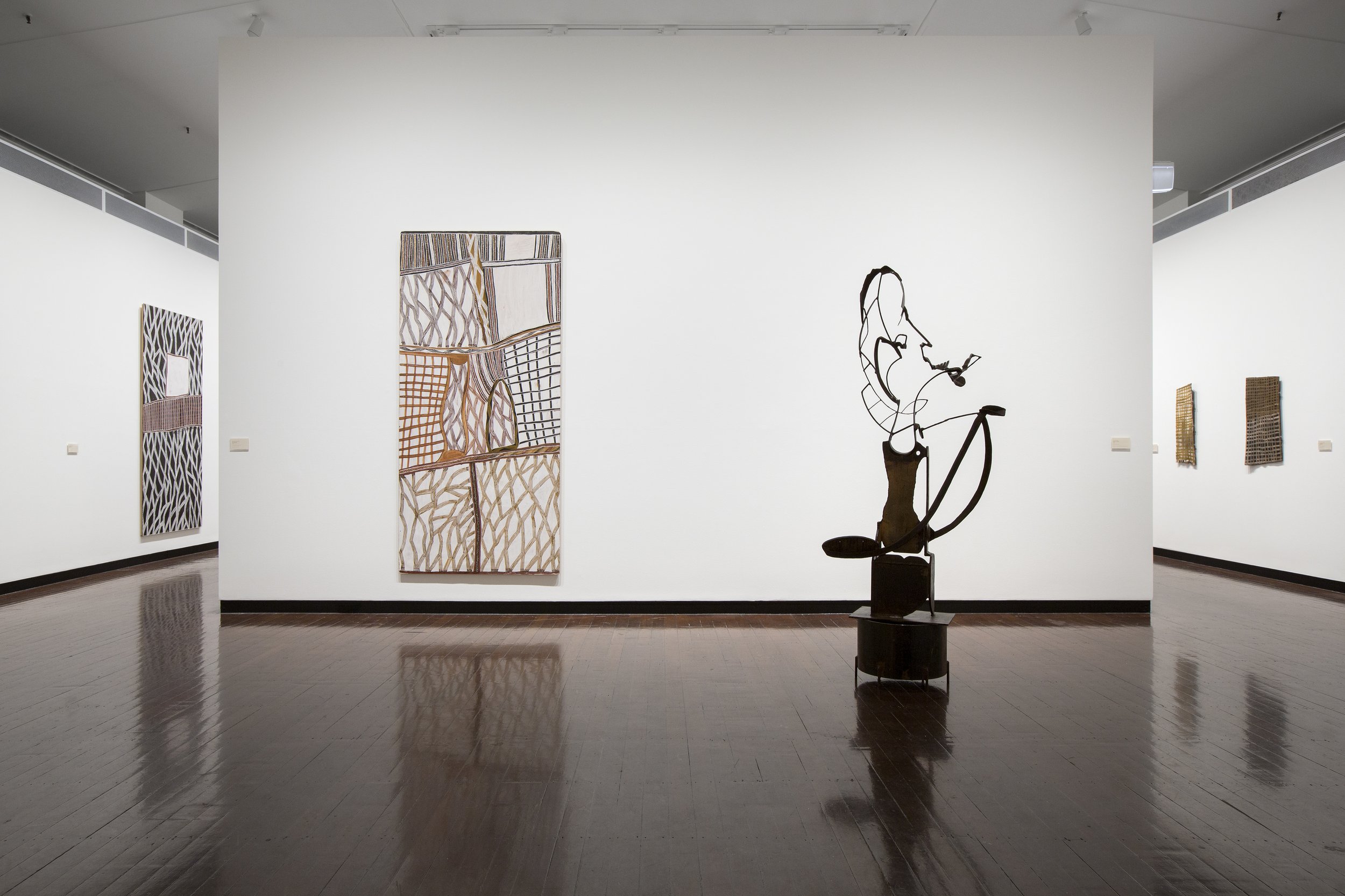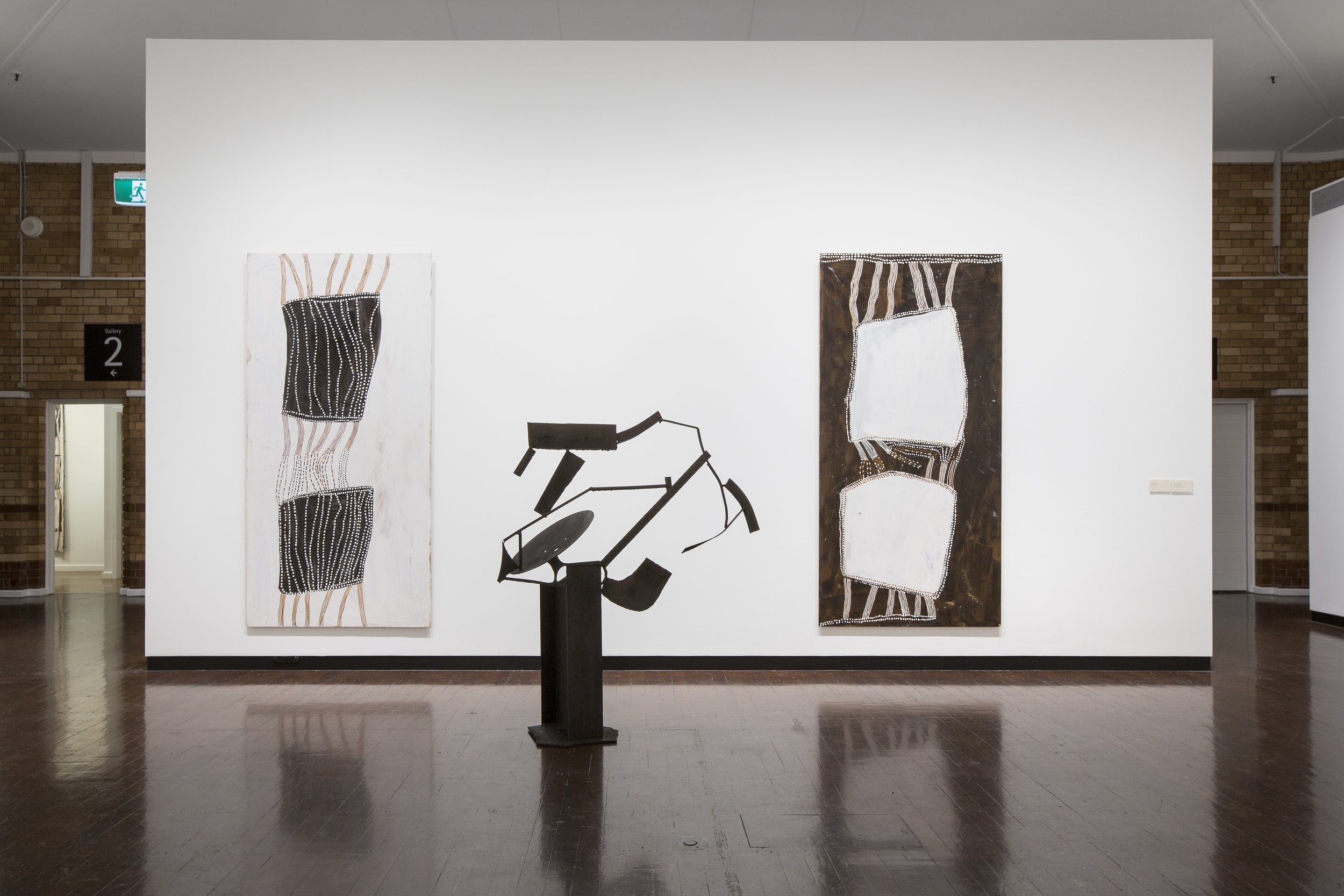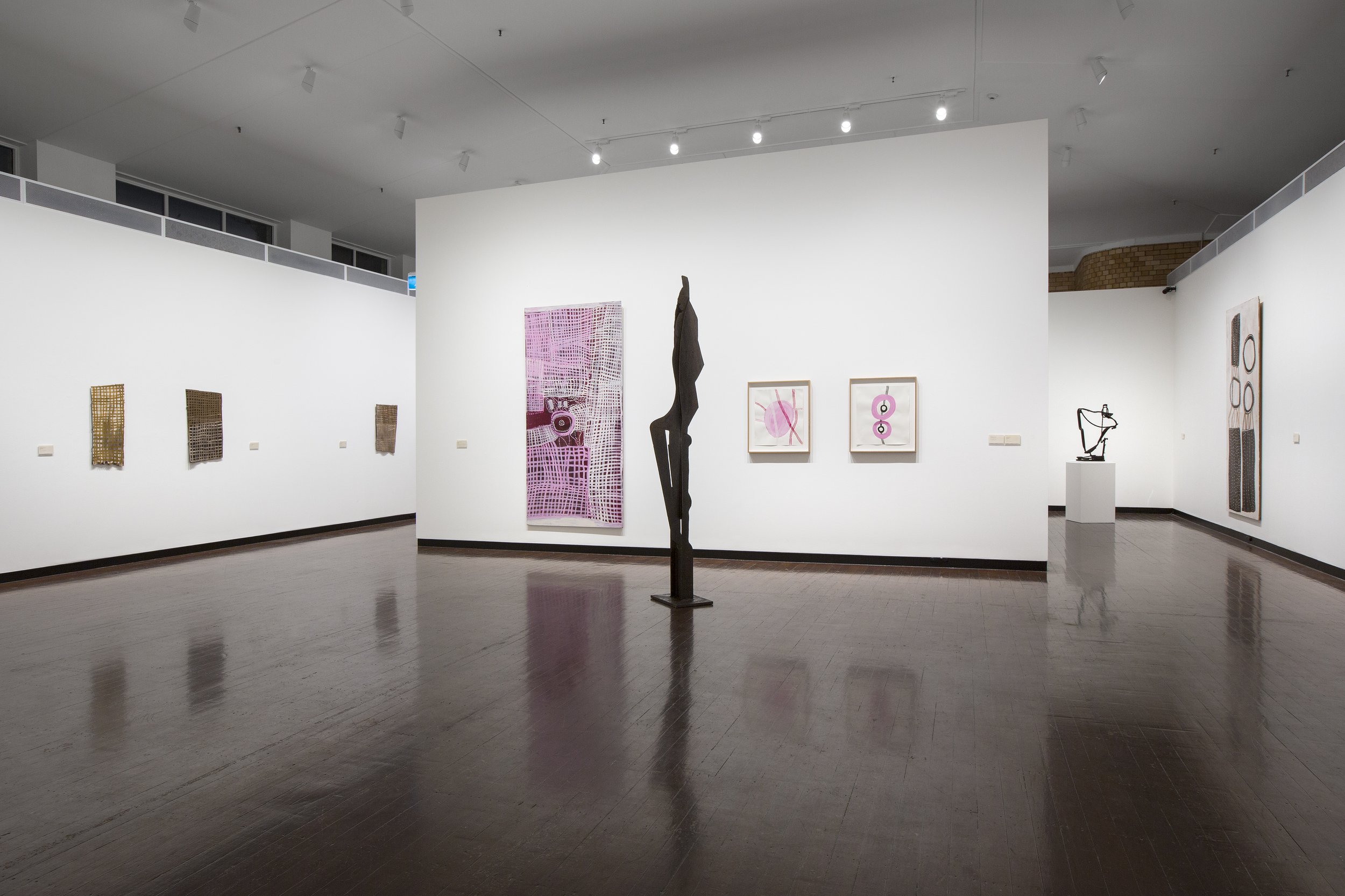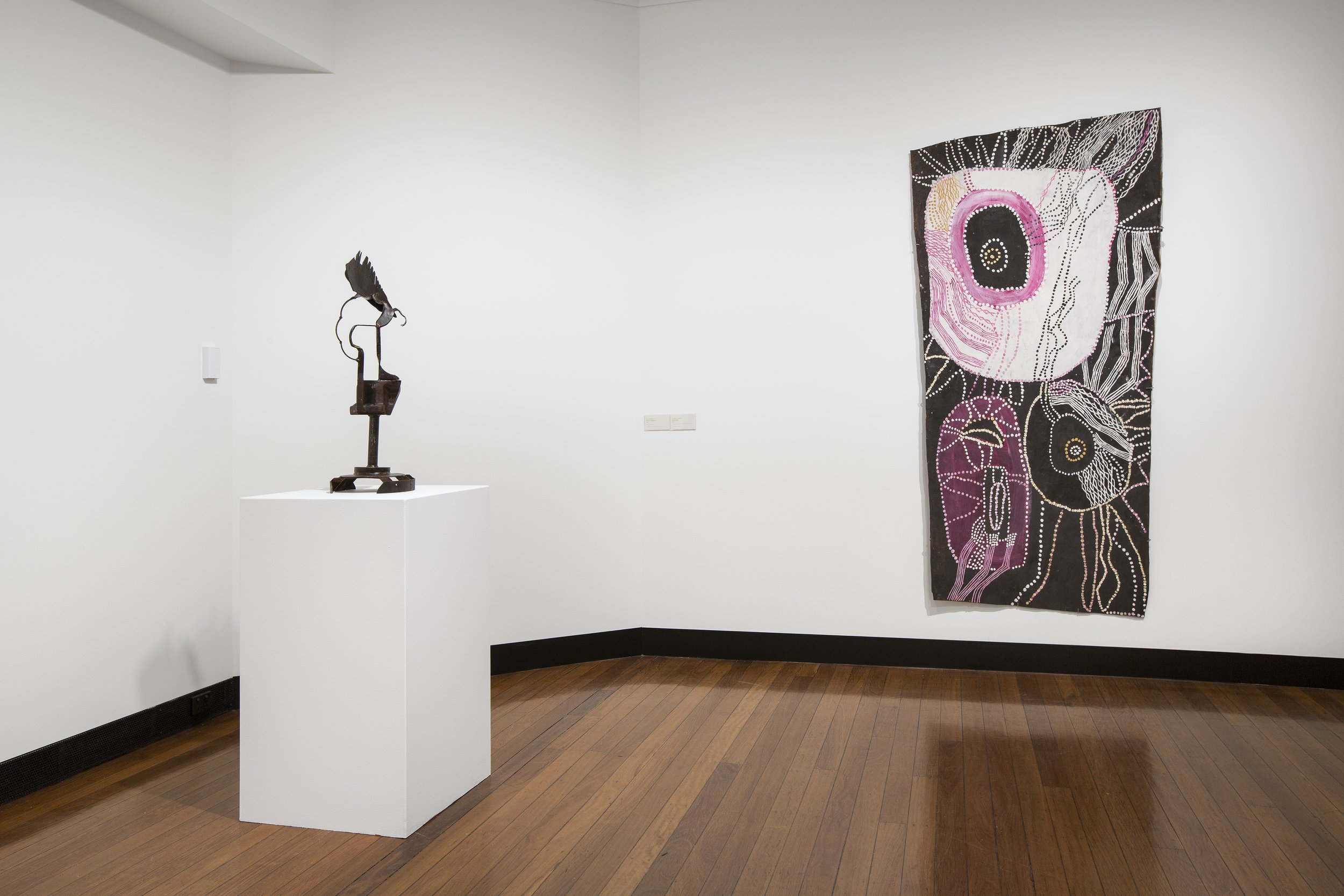Linear invention: Nonggirrnga Marawili and Leo Loomans at the Drill Hall
/This unusual exhibition brings together the work of two artists, previously unknown to each other, whose media and materials, cultural heritage and artistic formation are vastly different. Yolngu painter Nonggirrnga Marawili is a revered Elder of the Madarrpa people in Yirrkala, Northeast Arnhem Land, and underwent a long apprenticeship in painting, traditionally a male preserve in Yolngu culture, as part of a distinguished family of artists. Sculptor Leo Loomans, New Zealand-born, of Dutch heritage, educated in Warrang/Sydney and based in Kamberri/Canberra, works at the intersection of two distinct sculptural traditions: a process in which found fragments of machinery are cut, twisted and welded together in improvised assemblages; and the tradition of ‘drawing in space’ pioneered by Spanish sculptor Julio González, in works produced in collaboration with Picasso around 1930.
Putting these disparate works side-by-side, as curator Terence Maloon has acknowledged, carries risks. Not only the risk of insensitivity in juxtaposing Indigenous and settler cultures, but the risk of consigning their works, as Maloon writes in the exhibition catalogue, ‘to an illusory, false friendship, or to two solitudes’. But what speaks across these spaces, as the title ‘FLUENT’ suggests (it also references the landmark exhibition of contemporary Indigenous women artists in the Australian Pavilion at the 1997 Venice Biennale), is a quality of linear invention. This perception arose from the happy accident of their works being pictured on facing pages in the catalogue of a 2019 Drill Hall exhibition of the Geoffrey Hassall and Virginia Milson collection. Both artists are extensively represented in that collection, so this exhibition was a way of further teasing out and exploring this chance revelation of a mysterious affinity.
Marawili’s paintings frequently involve large circular or rectangular masses connected and crisscrossed by strings of dots, or ribbons of parallel lines suggesting, in a loosely pictorial way, rivulets of rainwater, or jags of lightning, the stippling of sand along a shoreline, or the movement of woven fish traps in water. Marawili has said that her works are conceived for ‘outsiders’, that she paints only subjects that interest her, that are devoid of the sacred. Yirrkala tradition stipulates that sacred stories can only be told using material that comes from the land; for male painters, charged with passing down lore, this has meant strictly replicating clan designs painted in ochre on bark. As a woman, Marawili is under less strict cultural obligations; not only is she freer to improvise with design and subject matter, she has been granted permission by Elders to supplement natural pigments with ink from discarded toner cartridges from the local print workshop, while the wooden boards she paints on were originally brought to Yirrkala to be laid over the basketball court for dances. Marawili’s works thus fluently combine both natural and artificial materials ‘from the land’, combining veiled acknowledgements of sacred designs with pictorial elements such as cloud patterns reflected in water, or the movement of water against rocks.
Loomans’s work with found metal similarly pays respect to its origins, while shifting functional forms towards becoming aesthetic or design elements. For instance, the teeth of interlocking cogs are elsewhere figured in an improvisatory register as a formal design of parallel ribs or grooves, articulating a push-and-pull between the restrictive precision of engineering and the freer aesthetic of line and gesture. Indeed, for an artist working in the apparently rigid medium of steel, Loomans is known for revisiting and revising his sculptures, returning to them again and again to shift and realign, add and cut away, a drawing in space that includes erasures and palimpsests. Compositionally, the sculptures often enact this tension between given and improvised, with the base sections more obviously collages of heterogenous found elements, sutured with visible welds, while the upper sections are looser and more linear, metal traceries that lift the mechanical components into rhythmic suspensions, or enclose and enfold shaped and articulated voids. This open structure of loops and struts and anchor points uses empty space and the light that passes through it as one of its materials.
This is an exhibition that responds to the viewer’s movements through the gallery: just as Marawili’s compositions subtly shift their balance when seen from different angles, their masses and lines releasing different energies of movement and stillness, Loomans’s sculptures not only dramatically change shape when viewed from different angles, but take on from close-up sculptural qualities of weight and tactility, and from a distance the lightness of drawing and mark-making.
What resonates between these works is the power of invention in the tracing of a line. Even as each artist works respectfully within the constraints of given materials and inherited traditions, their works convey a profoundly spiritual experience of both discipline and freedom.
Russell Smith, Kamberri/Canberra
Curated by Terence Maloon, ‘FLUENT: Nonggirrnga Marawili and Leo Loomans’ is on display at the Drill Hall Gallery, Kamberri/Canberra, until 16 April 2023.






















